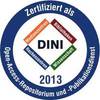Preview |
PDF, English
Download (8MB) | Terms of use |
Abstract
Mammalian genomes evolved to be very large and complex entities. The ca. 20,000 genes there encoded are precisely regulated in time, space and dosage to instruct for the development and the environmental adaptation of an organism. Gene expression, therefore, invokes a densely interconnected network of regulatory mechanisms in which sequence-specific transcription factors (TFs) occupy a central position. TFs characteristically bind to short DNA recognition motifs enriched at cis-regulatory elements (CREs), such as enhancers and promoters. Thereon, they tune gene expression by recruiting co-factors such as the basal transcription machinery and chromatin modification enzymes. In eukaryotes, the nucleosomes making up chromatin pose a physical barrier for the binding of TFs to DNA. Understanding how TFs overcome this barrier at CREs is key to disentangle mammalian gene regulation. For example, certain TFs, pioneers, have the unique ability to establish accessibility de novo at inactive CREs. Whether they are equally pivotal for the maintenance of chromatin accessibility at active CREs is not clear. It is also not clear how important is the combinatorial assembly of multiple TFs and how TF- and CRE-specific this competition against nucleosomes is. Finally, it is to be determined whether CREs can function modularly or not. In this project, I quantified TF-nucleosome competition in-vivo at CREs across the mouse genome. I did so at the single molecule level, at high coverage and near-nucleotide resolution using SMF, single molecule footprinting. SMF uses methylation footprinting to measure the frequency of CRE accessibility in a cell population, a proxy for the CRE- and TF-specific rate at which nucleosomes are outcompeted. Through its near-nucleotide resolution SMF captures footprints for TFs and nucleosomes, a leeway to investigate their interfacing. To capitalize on this resolution, I developed two computational tools. The first, SingleMoleculeFootprinting, for the robust single molecule methylation calling, is currently distributed on Bioconductor. The second, FootprintCharter, currently under development, is an unsupervised tool for mapping and quantifying TF and nucleosome footprints. To isolate the contribution of individual TF instances to accessibility at CREs, I quantified the effect of perturbing their binding across the mammalian genome. To that end, I exploited the natural genetic variation among different mouse species crossed into F1 lines. Such sequence variation often hinders the binding of one or few TFs at CREs and, therefore, their ability to outcompete nucleosomes. This highlights their effective contribution to CRE accessibility. Among others, I observed a large degree of heterogeneity of TF-nucleosome competition across the mouse genome, with transcriptional enhancers showing the highest degree of variability. TF-nucleosome competition appears to be TF-specific, with Ctcf, Rest, Banp, Nrf1 and Nfya being most frequently successful. Pioneer TFs such as Klf4, Oct4 and Sox2 display a lesser individual contribution but assemble in context-dependent ways to outcompete nucleosomes. Nevertheless, most TF instances at CREs appear disposable for the maintenance of chromatin accessibility, highlighting pervasive CRE robustness. Finally, given how they react to perturbations, CREs seem to function in an all-or-nothing fashion rather than modularly. With the work detailed in this dissertation, I shed some light on the contribution of transcription factors to chromatin accessibility at CREs. This work feeds into disentangling the hugely complex and vastly uncharted network of interactions that regulate eukaryotic gene expression.
| Document type: | Dissertation |
|---|---|
| Supervisor: | Kaessmann, Prof. Dr. Henrik |
| Place of Publication: | Heidelberg |
| Date of thesis defense: | 18 June 2024 |
| Date Deposited: | 30 Oct 2024 12:53 |
| Date: | 2025 |
| Faculties / Institutes: | The Faculty of Bio Sciences > Dean's Office of the Faculty of Bio Sciences |









